池田光穂
ここでいうパースペクティヴィズム(遠近法的展望) はニーチェのそれにしたがう。
「意識は、もともと、人間の個的実存に属するもので
はなく、むし ろ人間における共同体的かつ群畜的な本性に属している。従って理の当然として、意識はま
た、共同体的かつ群畜的な効用に関する点でだけ、精妙な発達を
とげてきた。……われわれの行為は、根本において一つ一つみな比類のない仕方で個人的であ
り、唯一的であり、あくまでも個性的である、それには疑いの余地がない。それなのに、われわれがそれらを意識に翻訳するやいなや、それらはもうそう
見えな くなる。……これこそが私の解する真の現象論であり遠近法論である」——ニーチェ『悦ばしき知識』信太正三訳、354節、p.394.、
1993 (→出典:「パースペクティヴィズム」)
忠犬ハチ公に関する図像学
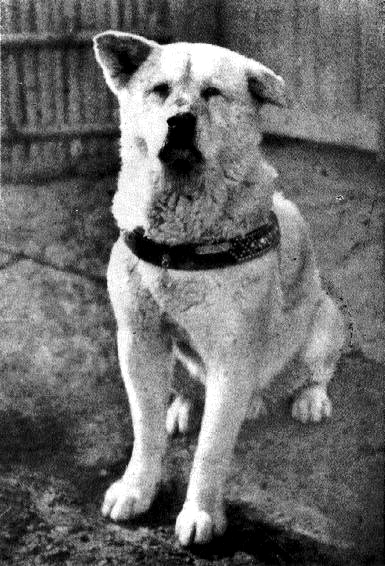 |
忠犬ハチ公(Hachikō,
10
November 1923 – 8 March 1935)"Hachikō (ハチ公, 10 November 1923 – 8 March
1935) was a Japanese Akita dog remembered for his remarkable loyalty to
his owner, Hidesaburō Ueno, for whom he continued to wait for over nine
years following Ueno's death.[2]
Hachikō was born on November 10, 1923, at a farm near the city of
Ōdate, Akita Prefecture.[3] In 1924, Hidesaburō Ueno, a professor at
the Tokyo Imperial University, brought him to live in Shibuya, Tokyo,
as his pet. Hachikō would meet Ueno at Shibuya Station every day after
his commute home. This continued until May 21, 1925, when Ueno died of
a cerebral hemorrhage while at work. From then until his death on March
8, 1935, Hachikō would return to Shibuya Station every day to await
Ueno's return.
During his lifetime, the dog was held up in Japanese culture as an
example of loyalty and fidelity. Well after his death, he continues to
be remembered in worldwide popular culture, with statues, movies,
books, and appearances in various media. Hachikō is known in Japanese
as chūken Hachikō (忠犬ハチ公) "faithful dog Hachikō", hachi meaning "eight"
and -kō which originates as a suffix once used for ancient Chinese
dukes; thus, Hachikō could be roughly translated as either "Mr. Eight"
or "Sir Eight".[4]" |
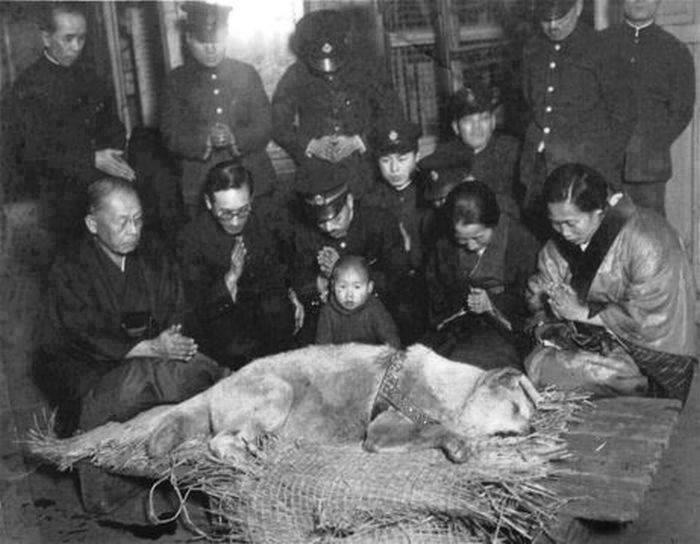 |
Hachikō
died on March 8, 1935 at the age of 11. He was found on a street in
Shibuya.[8] In March 2011, scientists finally settled the cause of
death of Hachikō: the dog had both terminal cancer and a filaria
infection. There were also four yakitori skewers in Hachikō's stomach,
but the skewers did not damage his stomach nor cause his death.[9][10]
亡くなったハチと参列者達。前列の右から2番目の人物が上野の妻・八重。後列にはハチの世話をしていた駅員らが集う。(※:写真は1935年3月8日。渋
谷駅倉庫にて。翌日の『やまと新聞』に掲載される。) |
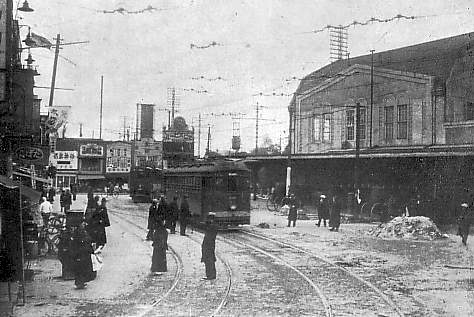 |
Shibuya Station
as it was in the Taishō and Pre-war Shōwa eras (1912–1945). |
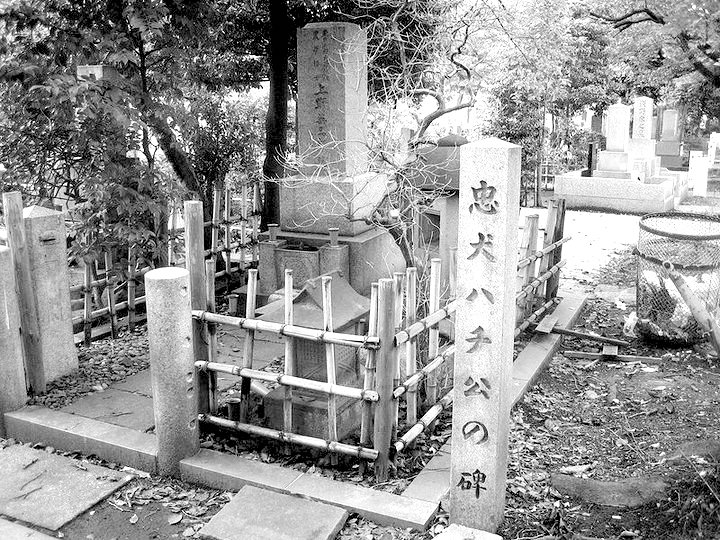 |
Hachikō's grave
beside Professor Ueno's grave in Aoyama Cemetery, Minato, Tokyo. |
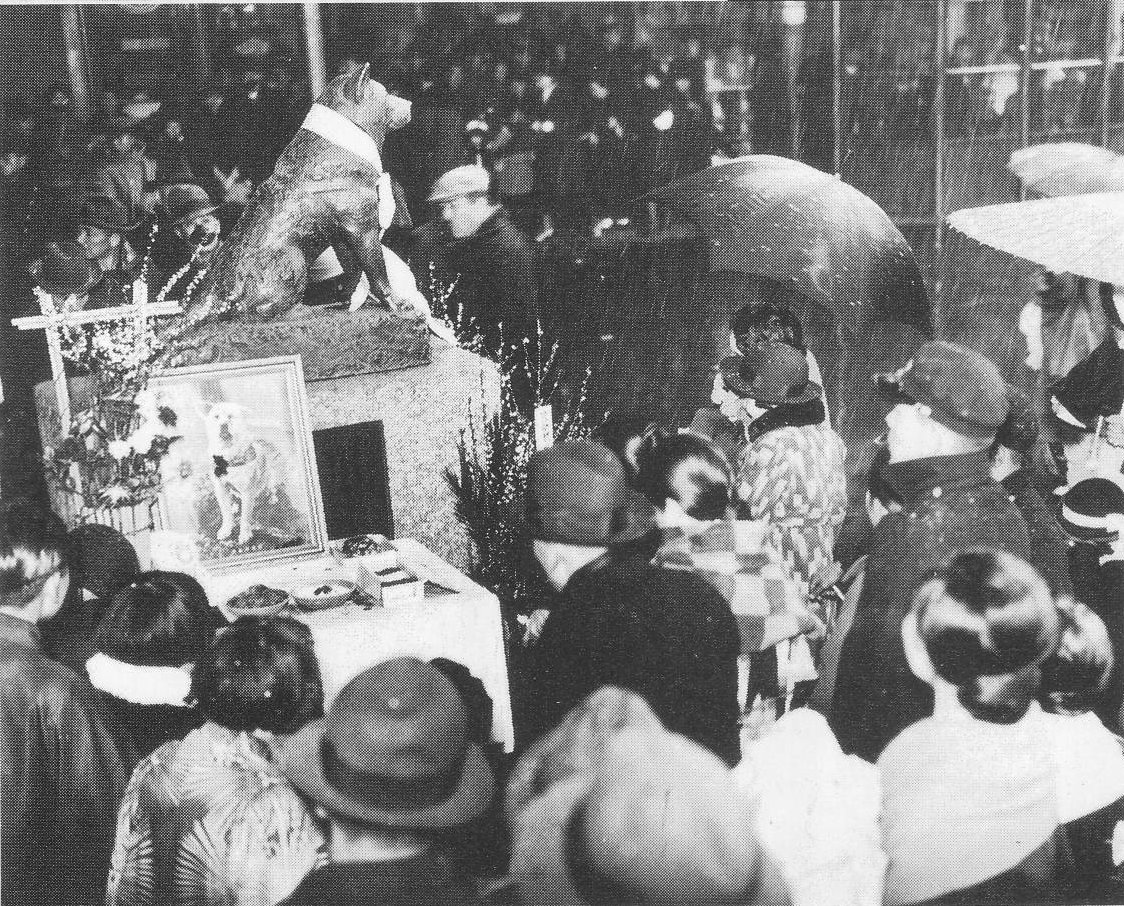 |
March 8, 1936,
one year anniversary of Hachiko's death, 『昭和 二万日の全記録 第4巻』講談社、1989年、p.53 |
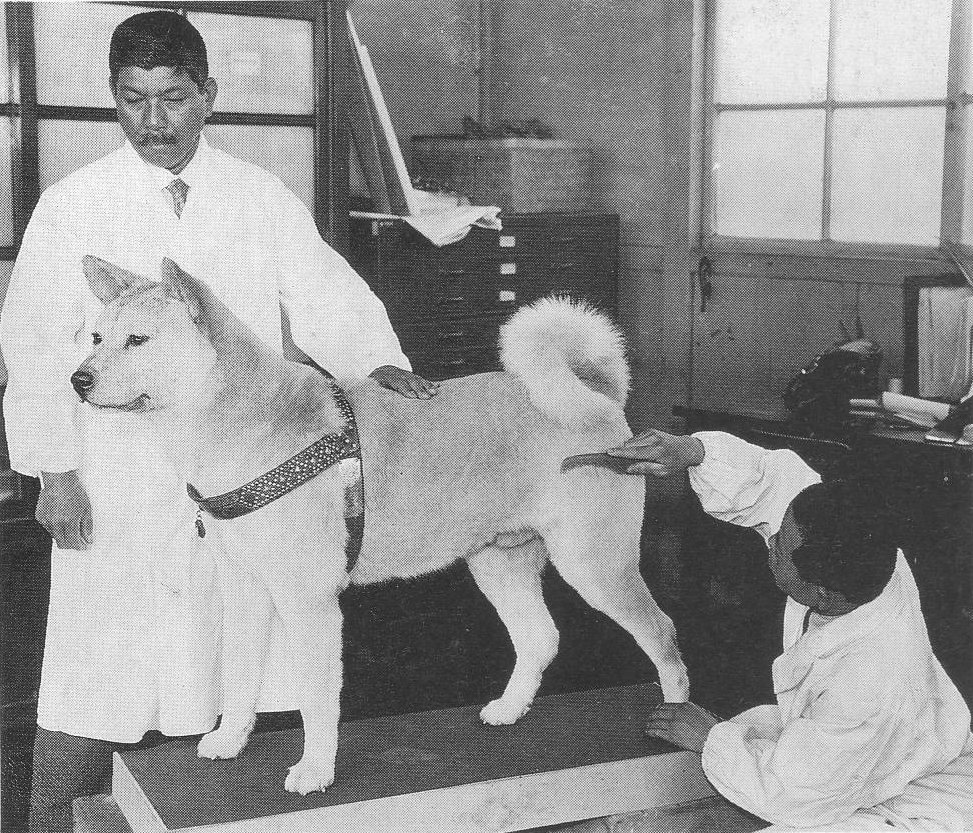 |
Stuffing of
Hachikō, 『昭和 二万日の全記録 第4巻』講談社、1989年、p.53 |
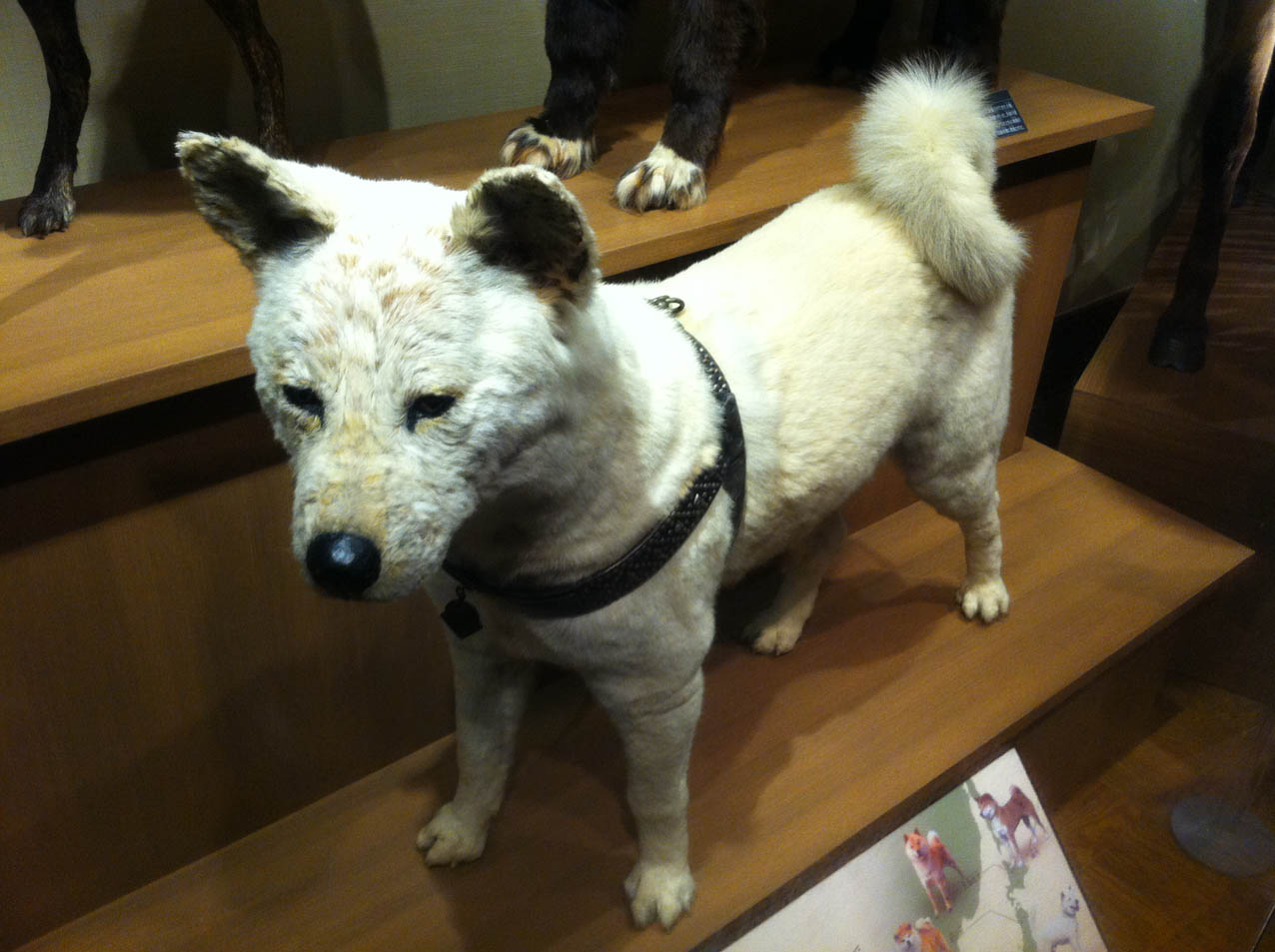 |
Hachikō's remains exhibited at
the National Museum of Nature and Science in Ueno |
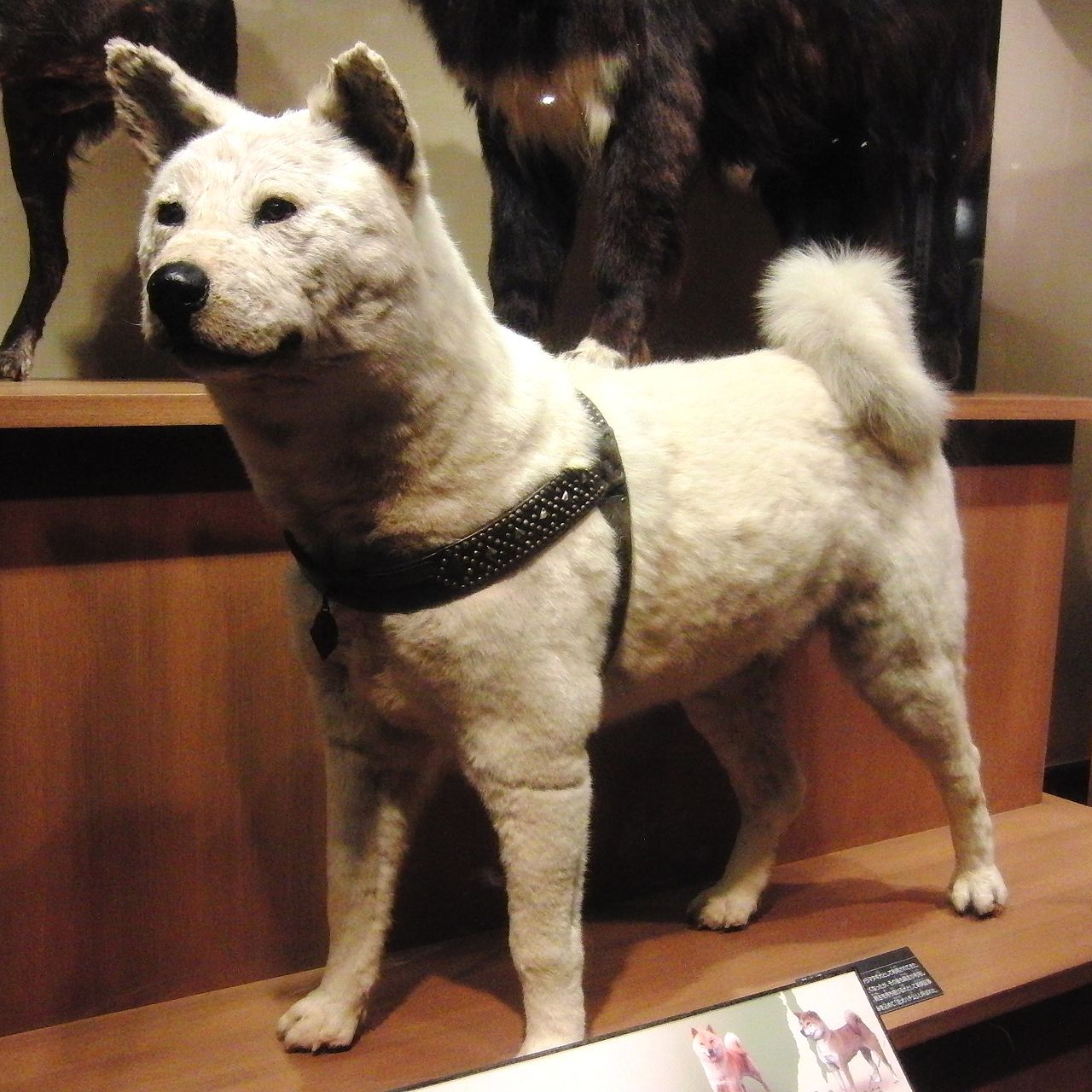 |
Hachikō's remains exhibited at the National Museum of Nature
and Science in Ueno. |
|
|
Stuffed animals of Loyal Dog Hachiko for sale at the museum store, the National Museum of Nature and Science in Ueno |
 |
Shibuya Hachiko minibus |
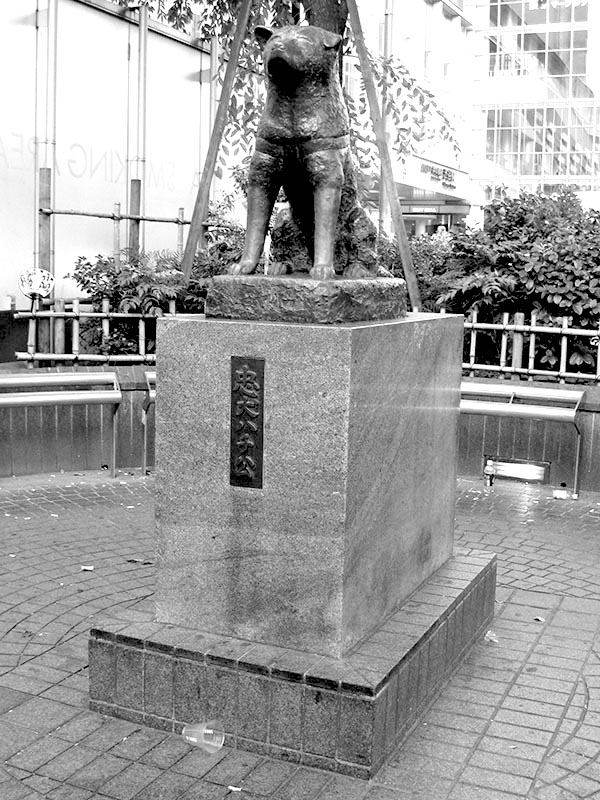 |
Hachi in 1945 |
 |
久居(ひさい)駅前に設置されている上野英三郎とハチ公像——上野英三
郎(Hidesaburō
Ueno, 1872-1925)は三重県一志郡本村(後の久居市、現在の津市久居元町)出身。上野六兵衛の三男 |
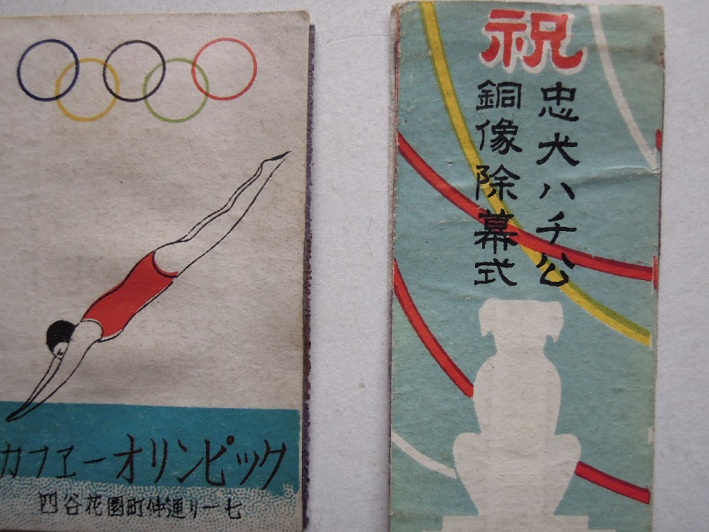 |
戦前ハチ公像
除幕式マッチラベル。ラベル蒐集家が、当時独自に製作した物。(左は同時代のカフェのマッチラベル) |
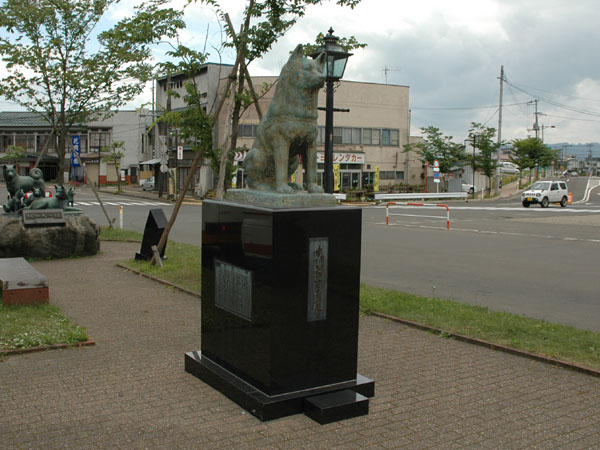 |
大館駅前のハチ公像——「ハチは1923年(大正12年)11月10日
[9]、秋田県北秋田郡二井田村(現・大館市)大子内の斉藤義一宅に八頭の兄弟で誕生した[10]。父犬の名は「オオシナイ(大子内)」、母犬の名は「ゴ
マ(胡麻)」で、赤毛の子犬であった。上野は秋田犬の仔犬を飼いたいとの希望があり、ハチは世間瀬という人物によって上野のもとへ届けられることになっ
た。ハチの価格は30円(当時)であり、生後間もない1924年(大正13年)1月14日、米俵に入れられて大館駅を出発。急行第702列車の荷物車にて
20時間の移動後、東京の上野駅に到着した[11]。上野の居宅は、東京府豊多摩郡渋谷町大字中渋谷字大向834番地(現:渋谷区松濤一丁目付近)にあ
り、ハチは、「ジョン」と「エス (S)」という二頭の犬たちと共に飼われた。このうちポインター犬のジョンは、特にハチの面倒見が良かった」忠犬ハチ公) |
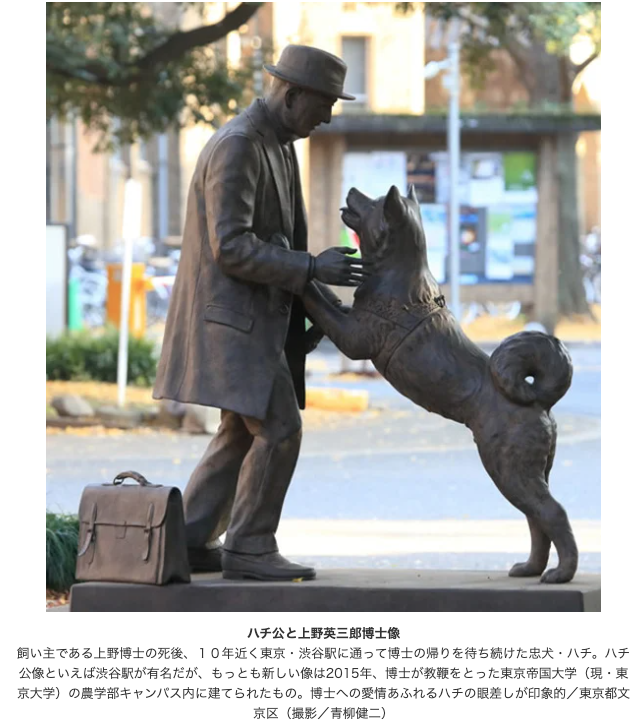 |
忠犬ハチ公だけじゃない! 全国の犬像にまつわる「犬と人の物語」と
は?(写
真もアエラより) |
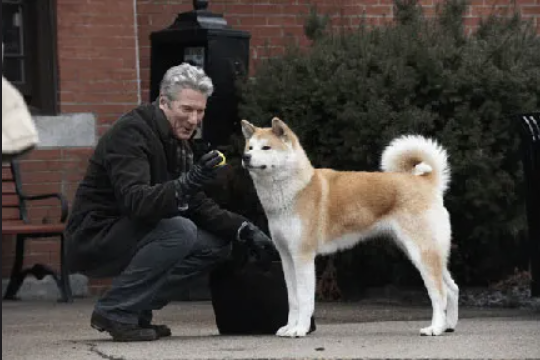 |
「ハチ公の銅像は、アメリカ東部ロードアイランド州、ウーンソケット市
にある鉄道の旧駅舎の前に設置され、2012年5月19日、地元の人たちや関係者が出席して除幕式が行われました。ここは日本映画、「ハチ公物語」のリメ
イク版で3年前に公開されたハリウッド映画、「HACHI(ハチ)約束の犬」の中で、俳優リチャード・ギアさん扮する主人の帰りを、愛犬ハチが待ち続ける
シーンが撮影された場所です」個
人ブログより) |
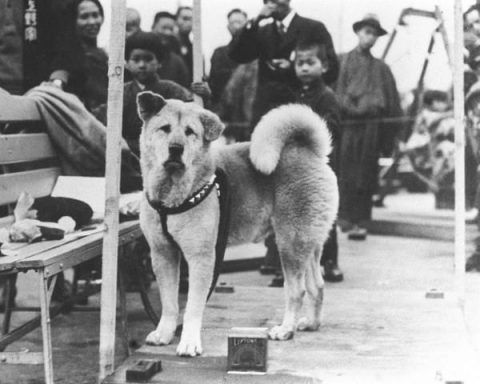 |
The last photo ever
taken of Hachiko, the dog who waited for 9 years after the death of his
master outside the train station every morning until he himself passed
away in November 10, 1935.
■現今における「忠犬ハチ公」ナラティブの増殖につ
いて
関連リンク
- 池田光穂「パースペクティヴィズム」
- 池田光穂「動物学者と動物の科学民族誌」
文献
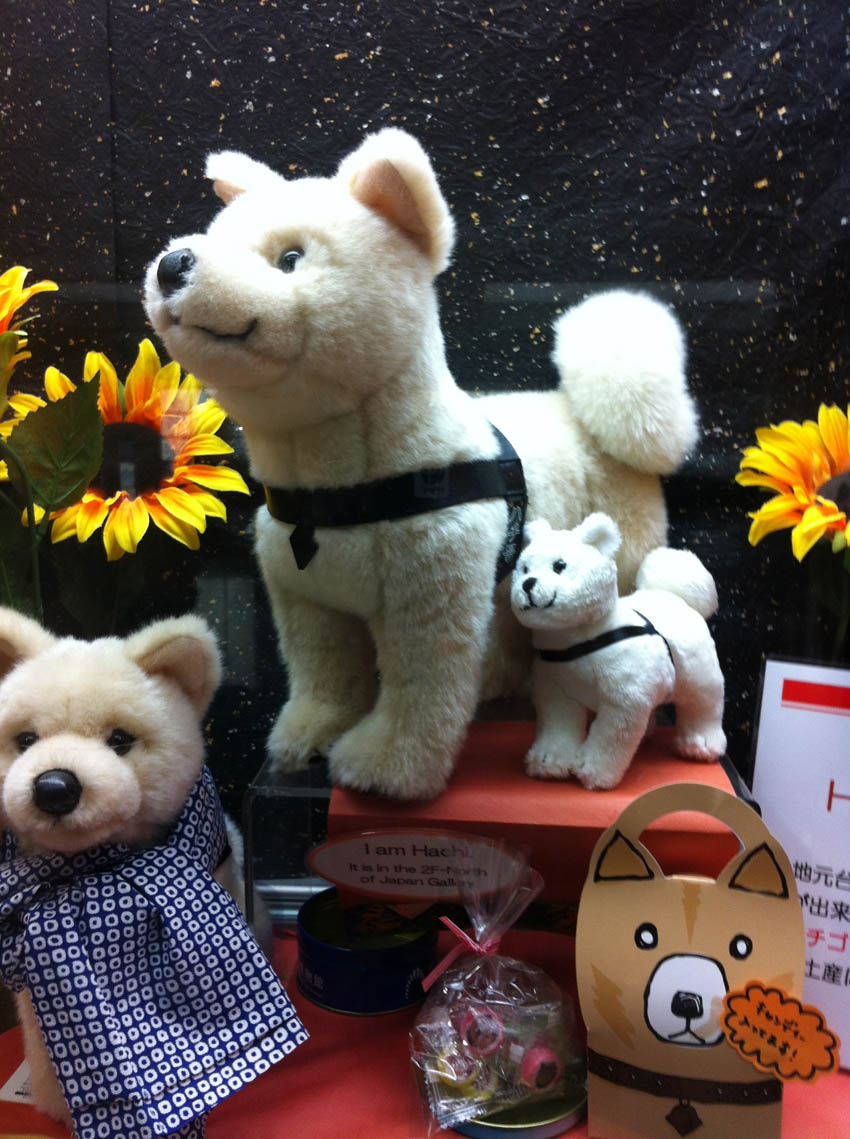


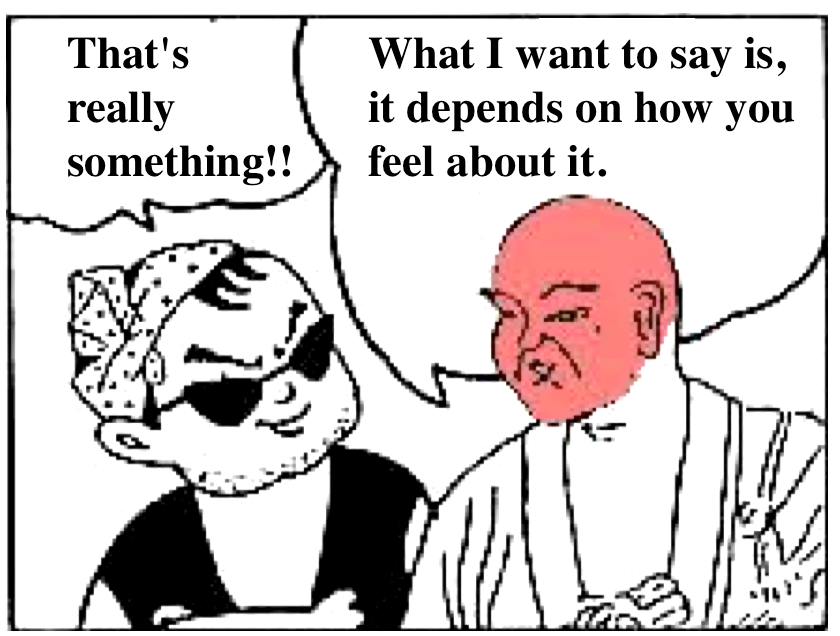

 ☆
☆